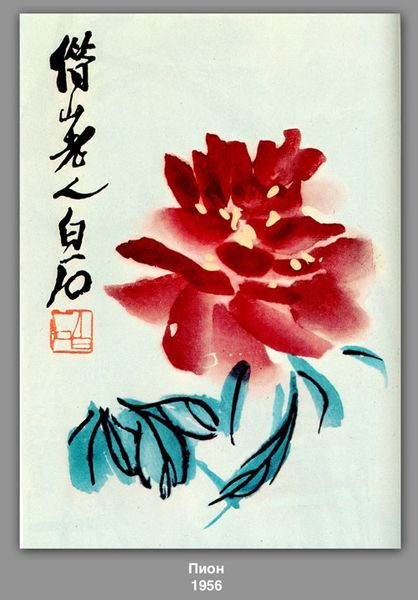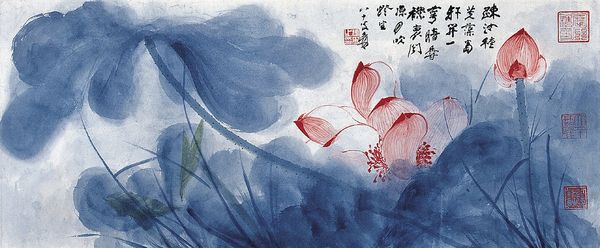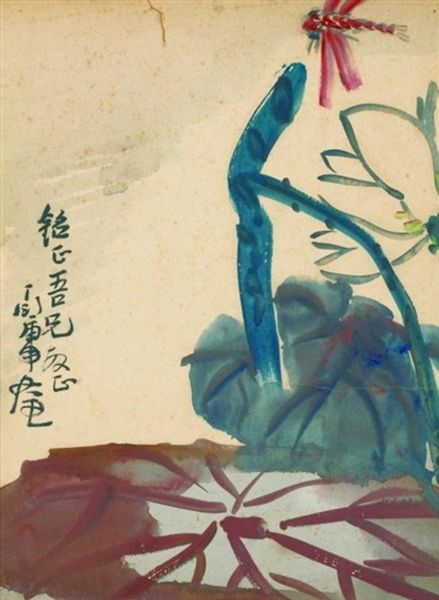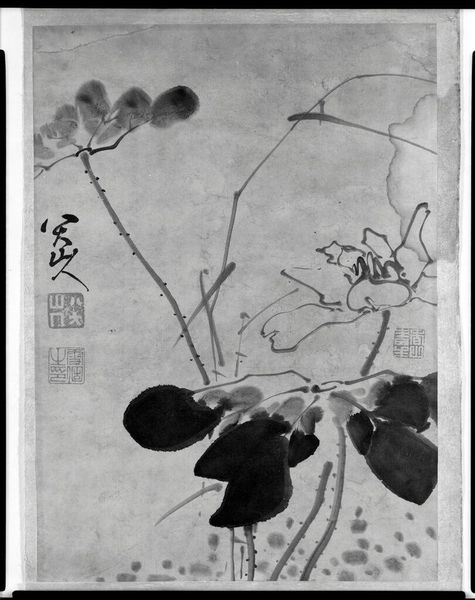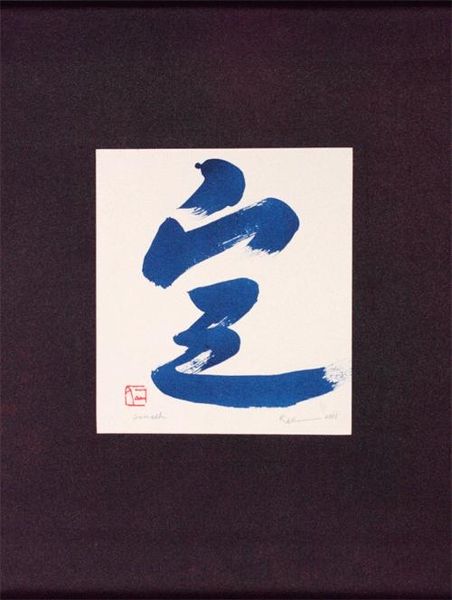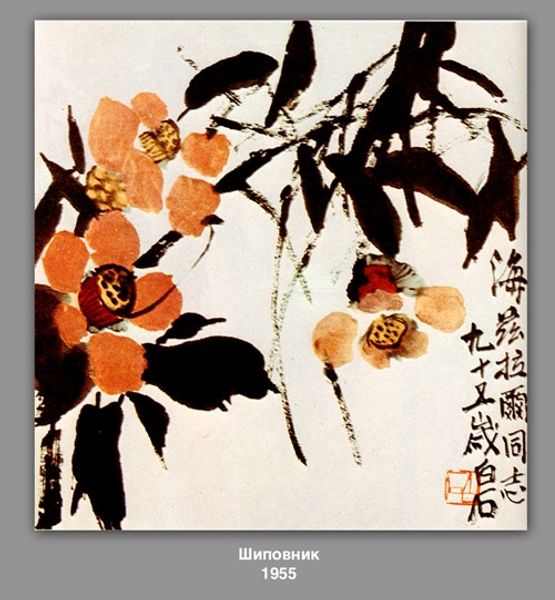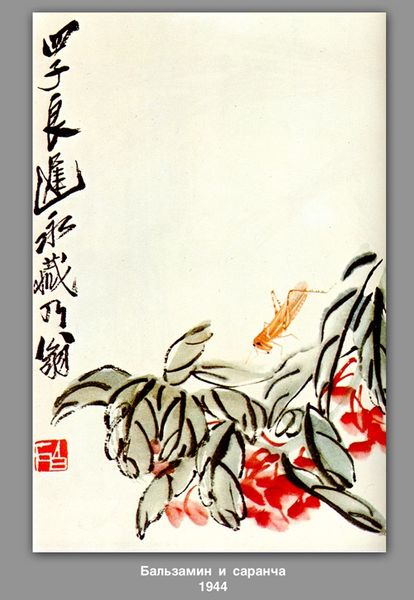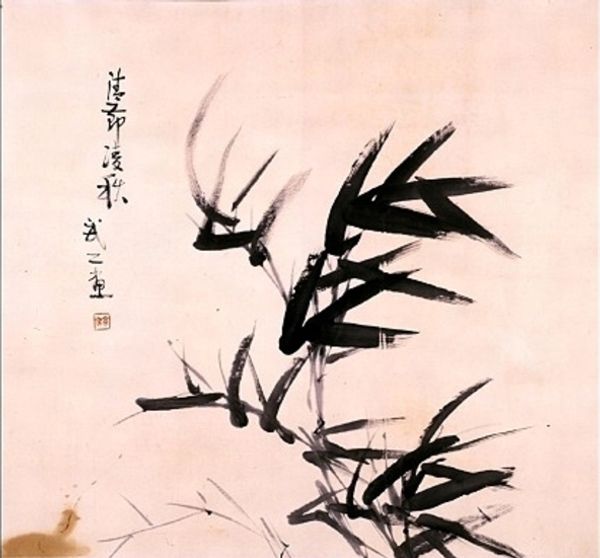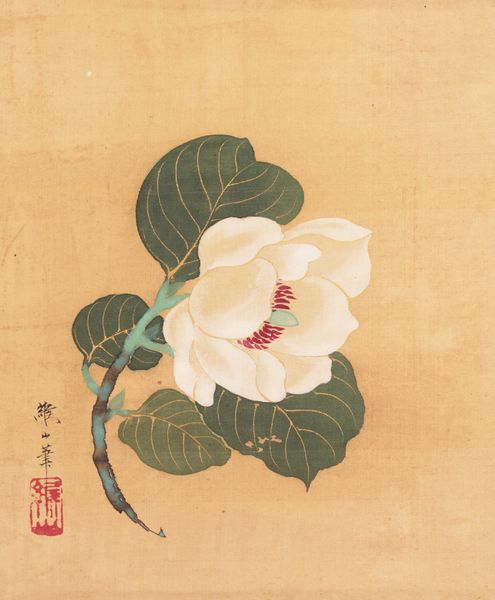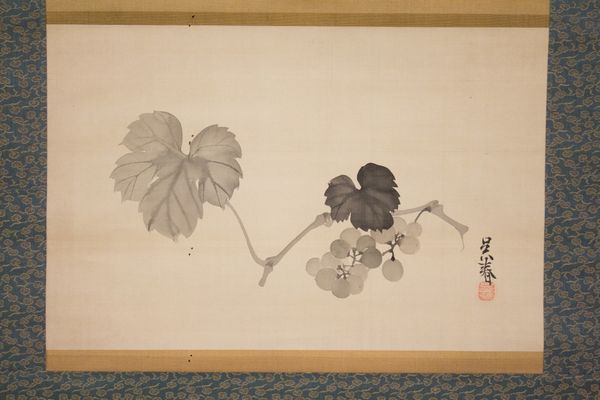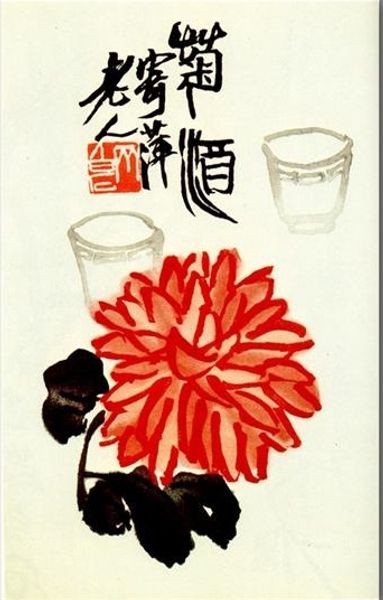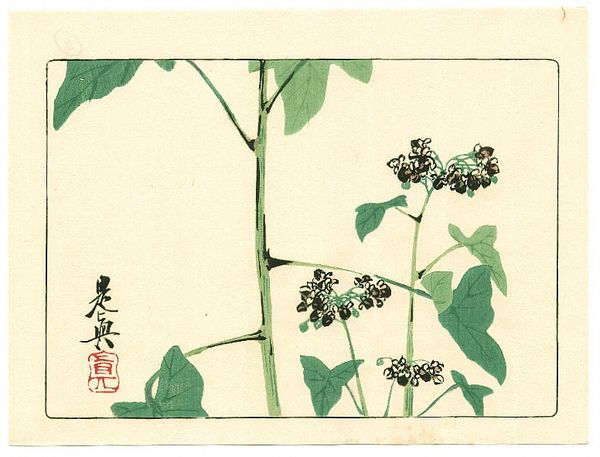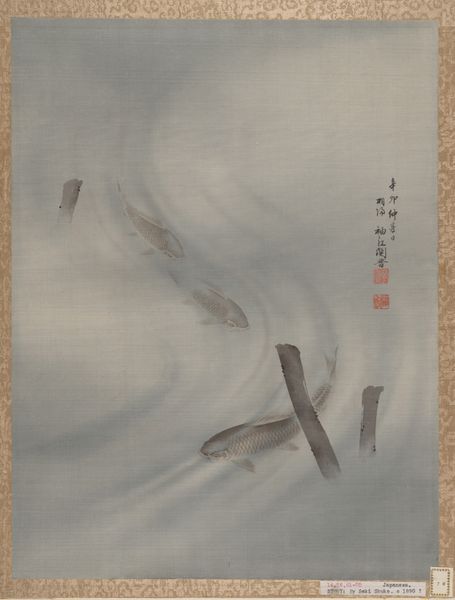
Copyright: Okumura Togyu,Fair Use
Editor: Here we have Okumura Togyu's "Morning Glory," created in 1950 using watercolor. It strikes me as quite delicate, yet the central bloom really commands attention. What do you see in this piece? Curator: What I see is a deliberate engagement with the complex relationship between tradition and modernity within postwar Japanese art. Togyu, while working within the ukiyo-e tradition and embracing Nihonga painting, consciously reinterpreted these styles. The morning glory itself, a common motif, can be read as a symbol of fleeting beauty and the ephemerality of life – ideas that resonate deeply given the wartime experiences and their impact. But what of the flower's prominent depiction; what does that evoke for you? Editor: I suppose it emphasizes the immediate present – a kind of carpe diem theme. So, how does Togyu’s choice of subject and style challenge or reinforce established notions of Japanese identity? Curator: It’s a constant negotiation. The artist both invokes a recognizable cultural symbol and revitalizes artistic traditions – but he doesn’t just replicate. There’s a definite simplification of form, a flattening of perspective that pushes against traditional techniques. The watercolor is also worth noting as it's been linked to the rising social status of female artists in postwar Japan; perhaps this signifies an attempt at feminizing traditional artistic forms and engaging more actively with women's socio-economic advancement? Editor: That’s fascinating, the painting as a subtle commentary on a shifting social structure. Curator: Exactly. We should consider not only the artistic value of such work but the narratives and intersectional undertones they espouse. Editor: I’ll definitely be thinking about this in a completely different light now. Thanks! Curator: My pleasure! There's always something more to explore.
Comments
No comments
Be the first to comment and join the conversation on the ultimate creative platform.
